blog
Do Babies & Toddlers Need to Eat Fiber? Yes, According to the U.S.D.A.

We asked Registered Dietitian, Nicole Silber, RD, CSP, CLC, for her take on the USDA’s 2020-2025 Dietary Guidelines for Americans. Nicole is a board-certified specialist in pediatric nutrition and has worked with hundreds of children with chronic medical conditions, food allergies, picky eating, oral-motor and sensory processing disorders, breastfeeding, gastrointestinal conditions, prematurity and obesity.
Fiber is an essential nutrient for all stages of life. While not technically “digested” by the body, it supports healthy digestion, blood sugar regulation, heart health, and even potentially strengthens the immune system. It can help to encourage healthy gut bacteria growth and balance, and can help to prevent or correct constipation, which is very common in toddlers.
A Special Kind of Fiber – Beta Glucan
There are two main types of fiber – soluble and insoluble fibers, each with their own health benefits. There is one type of soluble fiber, beta glucan, that is mainly found in oats and barley. It has heart-protective benefits, like helping the body to get rid of extra cholesterol. I am a huge fan of incorporating oats and oatmeal into children’s diets.

Where to Find Fiber for a Healthy Diet 🔍
Fiber is found naturally in many plant-based foods. Some examples of fiber-rich foods are:
- Whole grains, like whole wheat, whole oats, whole barley, whole rye, brown rice
- Beans and legumes like lentils, black beans, garbanzo beans, adzuki beans
- Fruits and vegetables
- Nuts and seeds like smooth, creamy nut butters, ground chia and flaxseeds, and quinoa
Unfortunately, many fiber-rich foods have potential choking risks, like dry, hard skins of fruits and veggies and whole nuts. For safe swallowing, cook hard fruits and vegetables (and remove hard skins), offer nut butters in smoothy and creamy versions, grind up nuts and seeds, and make sure beans are well cooked and served in baby safe consistencies.
How much Fiber Do Kids Need?
The Recommended Daily Amount (RDA) for fiber for children one to three years is 19 grams of fiber per day. It can be challenging to get all that fiber into small bellies. The 2020-2025 Dietary Guidelines for Americans note that toddlers are not eating enough fiber or whole grains. There is no RDA for infants’ fiber intake, but it is important to introduce fiber-rich foods so that they develop a preference for fiber rich foods later in life. It is much harder for a two-year-old toddler to accept beans for the first time, if he was not exposed to beans as a baby. Remember, the foods we offer babies during the first year of life impact future food preferences.

- Opt for whole grains when it comes to breads, pastas, and snacks. Check the ingredient lists on the nutrition labels and choose versions that list “100% whole grain.” Some favorites are whole wheat couscous – which blend well into a veggie purees. Choose whole wheat pasta, whole oatmeal, whole wheat bread, farro and quinoa (technically a seed, not a grain).
- Skip the white, refined grains, like breads, conventional pastas, and packaged snacks. Even that box of plain macaroni.
- Offer fruits and vegetables a few times per day. Aim to offer a fruit or vegetable at all meals. The 2020-2025 Dietary Guidelines for Americans recommend for children one to two years old to consume about 2/3 to 1 cup of vegetables per day and ½ to 1 cup of fruit per day. Unfortunately, studies show that about 90% of toddlers fall short of eating this recommended number of veggies.
- Serve veggies with the skin on as long as they are not choking hazards. Peel the skin of fruits and veggies that will be too hard for your child to manage. Some skins high in fiber that get soft when cooked are zucchini and red bell peppers.
- Add ground nuts and seeds into unsweetened pancakes, muffins, and scrambled eggs.
- Choose whole fruit instead of fruit juice.
- Top yogurt, cereal and oatmeal with fruit and ground nuts.
- Replace packaged snacks made with refined flour or breads for whole foods like fruit, vegetables, whole wheat bread with nut butters, bean-based spreads, and cheeses.
- If your baby or toddler refuses fruits and veggies, don’t give up! It may take multiple exposures of a food before your child will accept. The Dietary Guidelines 2020-2025 report it may take up to 8-10 exposures for an infant to accept a new food. While repeatedly offering the food, try to minimize the pressure placed on your child to actually eat the food. He may just need to explore it on his own first before he feels comfortable trying it.
Making Fiber Rich Foods –> Nutritionally Dense Foods
Because fiber can take up space in the belly, pair fiber rich foods with healthy fats and proteins to boost nutritional density of a meal. (more here nutrient density – link to blog post). For example, add cheese onto whole wheat pasta, mix a nut butter with whole oatmeal, or drizzle olive oil onto vegetables. This makes sure the fiber rich foods are packed with an added nutritional punch.

Nicole is the creator of Tiny Tasters, a series of on-demand and live classes that teach parents everything they need to know about how to feed their babies and toddlers. Prior to her current roles she was a clinical nutritionist at the Morgan Stanley Children’s Hospital at New York-Presbyterian/Columbia and at NYU Langone/Fink Children’s Ambulatory Care Center. Nicole lives in New York with her husband and her toddlers, Lily and Luna!
To read more about the Dietary Guidelines for Americans 2020-20205, click here.


